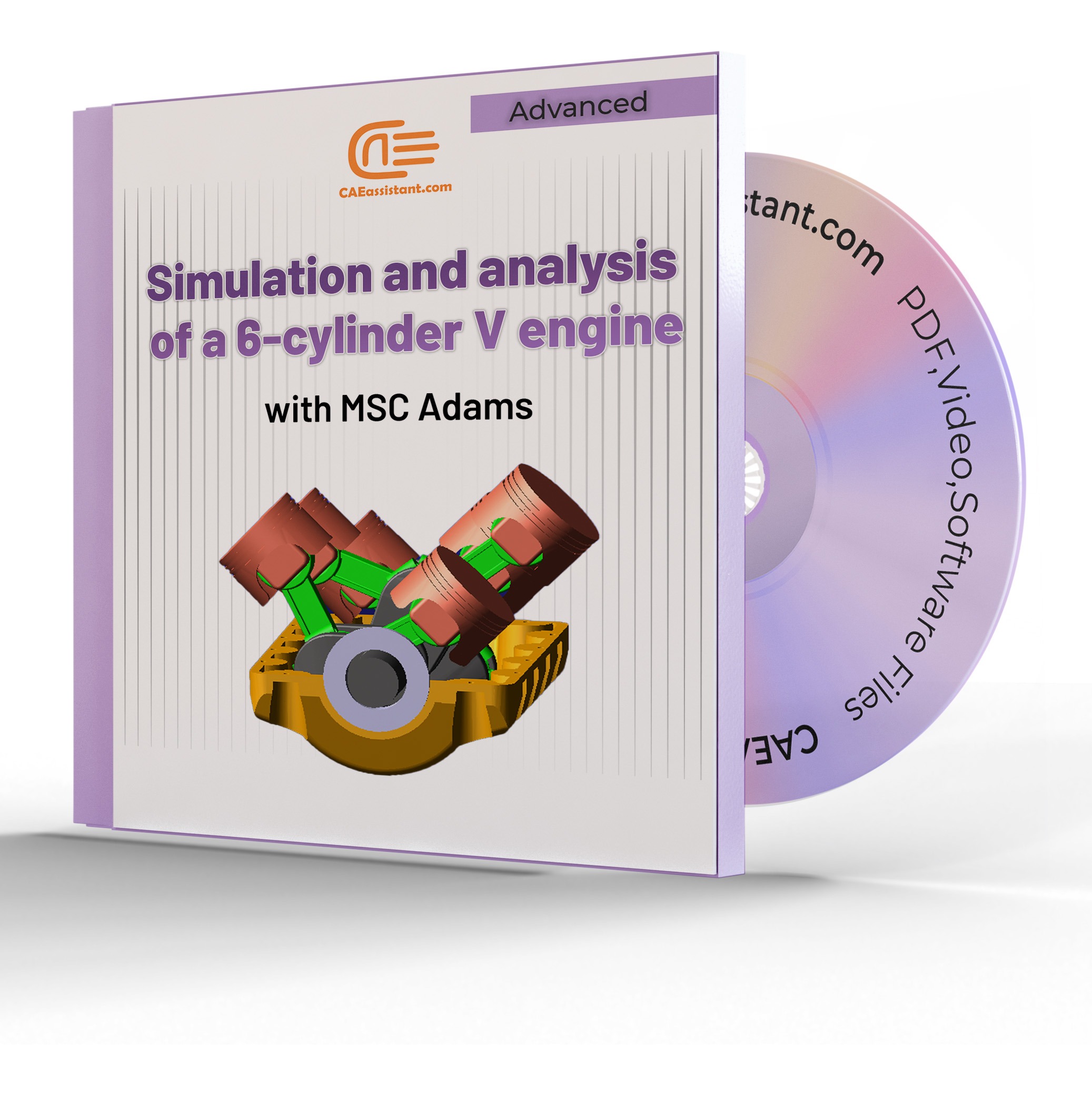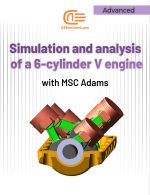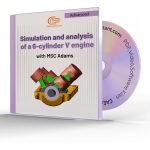MSC Adams is a powerful multibody dynamics simulation software that can be very useful for simulating and analyzing the behavior of a 6-cylinder V engine. Here are some ways in which MSC Adams can be utilized for this purpose:
Key Points:
- Dynamic Analysis: in ADAMS you can Create a detailed model or import an existed one to analyze performance, vibration characteristics, and stress distribution within the engine components.
- Motion Analysis: Simulate the motion of engine components during operation to understand interactions and functionality.
- Durability Analysis: Perform durability assessments under various load conditions to identify areas of stress, fatigue, and wear for design optimization.
- Optimization: Utilize optimization capabilities to fine-tune design parameters for improved performance, efficiency, and other desired characteristics.
- Virtual Testing: Conduct virtual tests under different operating conditions to evaluate performance, reliability, and efficiency without physical prototypes.
Workshop 1: simulation and analysis of a 6-Cylinder V engine in MSC Adams
This tutorial will instruct you on how to utilize MSC Adams software to predict the behavior of a 6-cylinder V engine by defining motion parameters for it.
Here are the 5 main steps
- Importing the Model: To begin, import the provided model into MSC ADAMS that we created beforehand. This step is essential to initiate the entire process and set the foundation for simulating the 6-cylinder V engine.
- Defining Materials: Next, define the materials for each part of the engine within ADAMS. This step allows us to specify the material properties for accurate simulation and realistic behavior of the engine components.
- Applying Joints: After identifying the engine in MSC ADAMS and defining materials, create joints to bond the various parts together. These joints play a crucial role in ensuring the proper movement and interaction of the engine components during the simulation. This can be done in connectors section.
- Simulation Illustration: In this stage, after applying the motion, the simulation of the 6-cylinder V engine is demonstrated. Watch as the parts move consecutively and along each other, showcasing the dynamic behavior of the engine in action.
- Analysis and Plots: Finally, analyze the simulation results and generate plots to understand the performance of the engine model. This step provides valuable insights into the functionality and efficiency of the simulated 6-cylinder V engine.





Reviews
Clear filtersThere are no reviews yet.